Content
Instructions for use Tepeki is supplied with the preparation. You need to study it before using it. The insecticide is a new agent that differs from its predecessors. It effectively destroys thrips, whitefly, and other pests without causing discomfort to the plant.
Description of the drug Tepeki
The market is filled with various pest control drugs. However, not all of them are safe. Chemistry destroys not only the insects themselves, but also harms the plant and the environment.
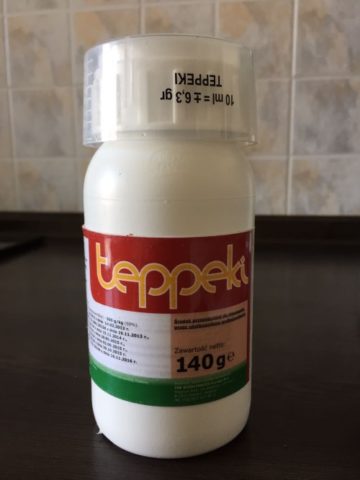
Teppeki is safe for humans and the environment
Recently, new, completely safe insecticides have begun to appear. These include the insect control agent Tepeki. The insecticide has a systemic effect. It destroys only pests, does not pollute the environment, and is safe for plants.
Composition of Teppeki insecticide
In its pure form, the drug has a high concentration. The main active ingredient in Teppeki is flonicamide. Its content in the insecticide is not less than 500 g / 1 kg. However, flonicamide is safe for ecology, since its small norm is present in the diluted form of the drug.
Forms of issue
The production of the drug has been established in Poland. Release form - water-dispersible granules. Tepeki stores are delivered packaged in plastic containers of 0.25, 0.5 or 1 kg. Packaging in a different weight or single dose is sometimes found. Granules are difficult to dissolve in water, this must be done with thorough mixing immediately before applying the insecticide.
What pests does Teppeki help against?
The drug effectively helps to fight pests, but it has a different effect on each type of insect. The instructions for use of the Teppeki insecticide indicate that the active substance is capable of completely destroying aphids, whiteflies, all types of ticks, as well as thrips. However, the drug has a different effect on such pests as the thyroid gland, lice, cacids and cicadas. The insecticide does not completely kill insects. It helps to control their number. Teppeki's effect is noticeable half an hour after treatment.
How to use Teppeki
Terms of use are not limited to dosage only. It is important to know how to breed granules, the features of use to combat each type of pest. It is necessary in the instructions for the Teppeki insecticide to study the safety rules when working with it, other nuances.
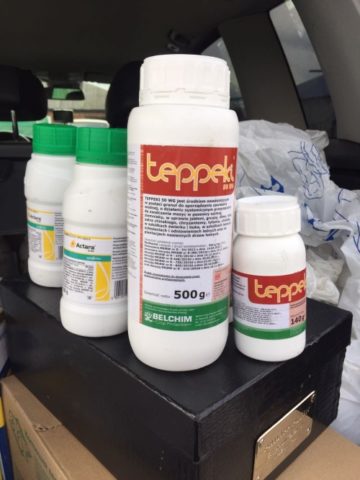
It is important to read the instructions before using the insecticide.
How to breed Teppeki
The insecticide granules are dissolved in water immediately before starting treatment. All work is carried out on the street. First, Tepeki is dissolved in a small amount of water. A liquid concentrate is obtained, after which it is brought to the required volume according to the recommended standards.
Plants are sprayed early in the morning or in the evening at sunset. At the end of the work, the remaining drug is disposed of, the sprayer is washed out with clean water.
Teppeki consumption rates
To obtain an effective solution that destroys the pest 100%, it is important to comply with the standards. 1 g of Teppeki is capable of exterminating insects. This unit is taken as a basis. The amount of water depends on which crops are going to be processed. For example, 1 g of granules are dissolved as follows:
- potatoes - up to 3 liters of water;
- flower crops - from 4 to 8 liters of water;
- apple tree - up to 7 liters of water;
- winter wheat - up to 4 liters of water.
Consumption rates of the finished solution will depend on how the sprayer is set up.
Processing time
The insecticide is used with the onset of spring, when the first pest larvae appear. The duration of the treatments lasts until the end of the growing season. However, a maximum of three sprays are allowed per season. The minimum interval between them is 7 days. It is allowed to use during flowering or fruiting crops. However, at the time of harvest, Tepeki's active ingredient must be neutralized. The duration of the protective properties of the insecticide is 30 days. Based on simple calculations, the processing of crops is done a month before harvesting.
Instructions for the use of Teppeki from insects
A sprayer and personal protective equipment are prepared for processing plants. A separate plastic container will be required. It is convenient to prepare a working solution in it. Teppeki granules are difficult to dissolve. First, they are poured with a little water. The granules are softened. Complete dissolution is achieved by constant stirring.
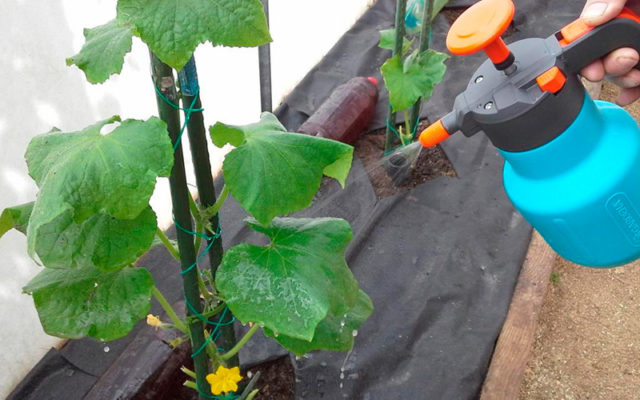
It is best to handle plants in the early morning or late evening.
The required amount of water is added to the concentrated solution. Stirring is continued until complete dissolution. Small particles of solids will settle at the bottom. So that they do not clog the sprayer nozzle, the solution is poured into the tank after filtering.
The freshly prepared solution is used all the way. If an error occurs with the calculation of the volume, the remaining surplus is disposed of. At the end of the work, the sprayer is washed and dried.
Teppeki preparation for whitefly
For a successful fight against whitefly, 1 g of granules is dissolved in 1-7 liters of water. The volume depends on what type of plant is going to be processed. Usually one spraying is enough to completely exterminate the pest. If this did not happen, Tepeki's whitefly instruction provides for repeated processing, but not earlier than after 7 days.

To destroy the whitefly, one treatment with the drug is enough
Teppeki from thrips
To get rid of thrips, prepare a 0.05% solution. In large volumes, it is 500 g / 1000 l of water. In the background information on the registration of the insecticide, it is indicated that 0.3 kg of Teppeki granules are consumed for the control of thrips on a plot of 1 hectare.
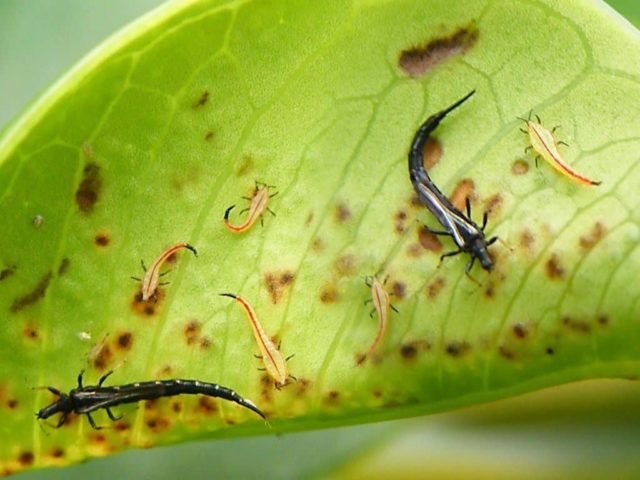
To destroy thrips, prepare a 0.05% solution
Teppeki for mealybug
The pest is considered to be very dangerous. He pierces the skin of the plant, sucks out the juice. When signs of a worm appear, all indoor crops must be processed. If even one uninfected plant is missed, the pest will appear on it over time.
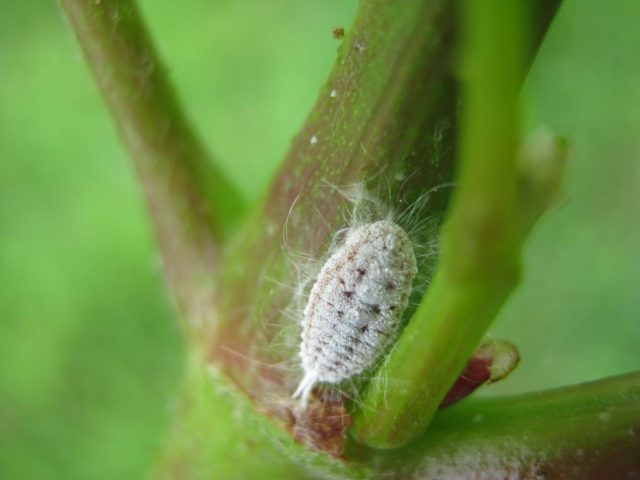
When a worm appears, all indoor plants are treated
To destroy the worm, a complex treatment is carried out with several drugs. The solution is poured over the soil. However, the dosage of the active substance is increased by 5 times than when spraying.
There are several schemes, but the most optimal is:
- The first watering is carried out with Confidor diluted in a consistency of 1 g / 1 l of water. Plus they use Appluad to it. The solution is diluted at a dosage of 0.5 g / 1 l of water.
- The second watering is performed a week later with Tepeki. The solution is prepared at the rate of 1 g / 1 l of water.
- The third watering is done 21 days after the second. The solution is prepared from the drug Confidor or Aktar at the rate of 1 g / 1 l of water.
Insecticides can be changed in order, but when replacing with analogs, it must be taken into account that they must be with a different active substance.
Teppeki from spider mites
The appearance of the pest is determined by the marbling of the foliage. The tick itself looks like a small red dot. If the infection is strong, a solution of 1 g of insecticide per 1 liter of water is prepared for spraying. After the first treatment, some individuals can still survive on the plant. Many growers perform three sprays with an interval of a month between each procedure.
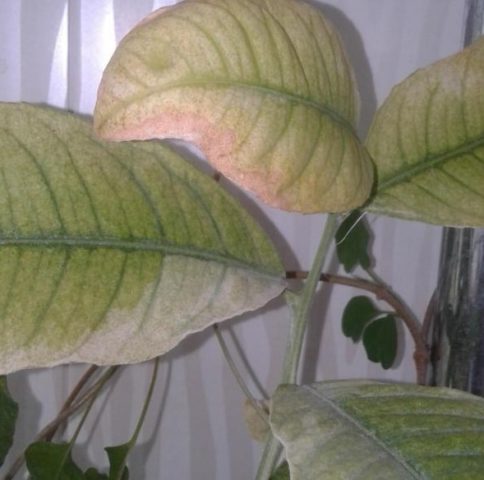
To treat a heavily infected plant with a tick, three treatments with an insecticide are carried out
Application rules for different plants
The basic rule of applying an insecticide is not to process crops for a month before harvesting. With flowers, everything is easier. I spray violets, chrysanthemums, roses with a solution of 1 g / 8 l of water. Fruit trees, such as apple trees, are best sprayed in early spring, during ovary, and a third time after harvest. The solution is prepared from 1 g / 7 L of water.

For spraying violets, the solution is prepared from 1 g of Teppeka per 8 liters of water
Potatoes need a strong solution. It is prepared from 1 g per 3 liters of water. You cannot dig up tubers for food throughout the month. As for the instructions for using Teppeki for cucumbers and tomatoes, it is a little more complicated here. Firstly, in Russia the insecticide is registered only as a means for the destruction of aphids on apple trees. Secondly, cucumbers and tomatoes ripen quickly, and after processing, vegetables cannot be eaten. Growers choose the right moment, usually at an early stage in the development of the crop. Although, in the instructions, the manufacturer indicates the waiting period for garden crops - from 14 to 21 days.
Compatibility with other drugs
For complex treatments Tepeki is allowed to be mixed with other preparations that do not contain alkali and copper. If there is no data on the composition of another pesticide, the compatibility is checked independently experimentally.
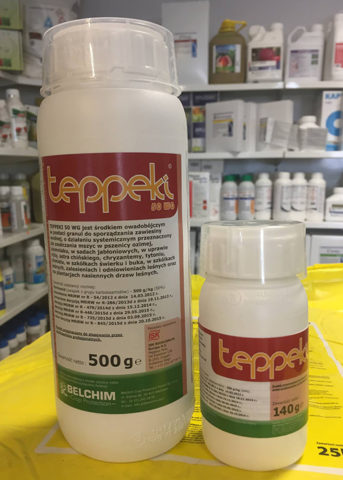
Teppeks can be mixed with other drugs that are free of copper and alkali
To check compatibility, pour 50 ml of each component into a plastic or glass container. The absence of a chemical reaction associated with color change, the appearance of bubbles, the formation of flakes, suggests that Teppeki can be safely mixed with this pesticide.
Pros and cons of using
There are so many pests that it is almost impossible to get a crop without the use of insecticides. The advantages of the popular drug Teppeki are explained by the following facts:
- Fast action is observed after treatment. High percentage of pest destruction.
- The insecticide has a systemic effect. If not all insects fall under the spray of the drug, the hiding individuals will still die.
- The protective effect lasts 30 days. Three treatments are enough to keep crops safe for the entire season.
- There is no insect habituation to Teppeki.
- The insecticide is compatible with many other drugs, which makes it possible to carry out complex treatment.
The disadvantages are high price and limited use. According to the instructions for the season, it is allowed to spray three times. If the pests reappear, you will have to use another drug.
Teppeki's analogs
The drug has a systemic effect. In general terms, most insecticides with similar characteristics can be ranked as analogues. However, the difference between Teppeki is the lack of insect resistance to the drug.
Precautions
The third hazard class is established for Tepeki. The insecticide is harmless to humans, bees, and the environment. This is due to the low concentration of the active substance in the finished solution.

When spraying from protective equipment, use gloves, a respirator and goggles
Gloves are used to prepare a solution from protective equipment. When spraying individual plants or small beds, glasses and a respirator are needed. When working on a large plantation, it is best to wear protective clothing.
Storage rules
For Teppeki granules, the shelf life is indicated by the manufacturer on the package. It is better to dispose of the excess of the prepared solution immediately. Store the insecticide in its original packaging, tightly closed, placed in a dark place where children cannot access. The temperature range is limited from - 15 to + 35 aboutC. Optimal storage conditions are considered to be from + 18 to + 22 aboutFROM.
Conclusion
Instructions for the use of Teppeki should always be at hand. It is not recommended to change the dosage on someone's advice. The insecticide will not bring much harm from misuse, but it will not be beneficial either.
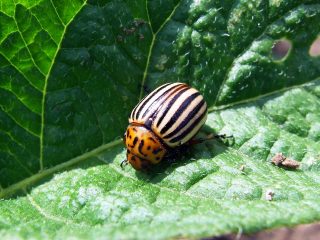
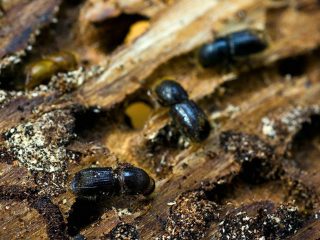
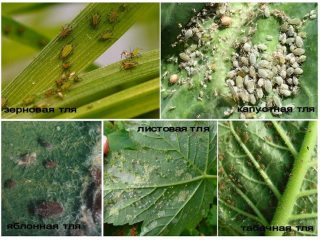
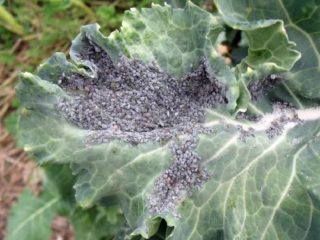
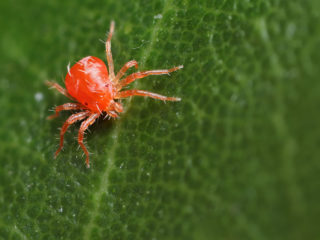




Tepeki is working. I have not seen aphids on treated fruit trees for 30 days. Now it began to appear, I will process it again. The best part is that Teppeki works.